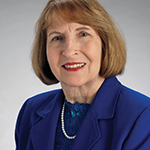The attributes of a master clinician are what we should all strive to achieve. No one can achieve them all. I certainly have not, but I keep trying.
Q: Who were a few of your clinician role models, and what qualities did you admire in these individuals?
A: I did my medical training and spent the first half—24 years—of my medical career in the U.S. Army. The rheumatologist who inspired me to go into rheumatology was Robert Claypool, MD. When I first met him, he was a lieutenant colonel who rose through the ranks and finished his outstanding career as a major general. He was an excellent rheumatologist who was an amazing leader and motivator. I consider him my mentor.
While in the military, I was able to invite multiple outstanding clinicians to be visiting professors. Those who I considered master clinicians, who influenced me early in my career due to their depth of knowledge and expertise, included William Kelley, MD, Dan McCarty, MD, Bevra Hahn, MD, Jack Klippel, MD, and Doyt Conn, MD—to name just a few.
Q: What habits can a fellow-in-training or junior rheumatologist incorporate into daily practice to build on their skills as a clinician?
A: Learn from the patients you see, and learn from the mistakes you will make. You can read about a disease in a book, but until you actually take care of a patient with that disease you really can’t improve your skill as a clinician. You need to admit when you don’t know what the diagnosis is, but be willing to follow the patient, get help from other colleagues and pursue a diagnosis until you get it correct. You need to track patient outcomes to see if the diagnosis is correct and that therapies you treat the patient with actually help the patient. Over the years, these experiences will be invaluable in your development. If possible, establish a network of colleagues to discuss and get help on cases. No one can know it all.
Q: What lessons have you learned from patients that have contributed to your growth as a clinician?
A: Patients have taught me how difficult it is to live with a chronic autoimmune disease. This [interaction] has increased my compassion and understanding for their situations.
Patients have also taught me humility. Patients don’t always present with classic signs and symptoms of a disease or respond to therapy the way the textbook says they are supposed to respond. Many times, I have thought, ‘This can’t be a rheumatic disease,’ only to find out after following them for a while that they are presenting in an atypical fashion. Rheumatology is an interesting and challenging subspecialty, and that’s why we love it.



